Steamed Buns (Baozi) – China’s Most Popular Breakfast
A very old Chinese wheaten food, and part of traditional Chinese food culture, steamed buns (Chinese pronunciation: baozi, in Chinese包子) is the most popular Chinese breakfast. And also the cheapest! There are hundreds and even thousands of steam bun shops in every city of China.
Surprisingly, steam bun find its origin in the 2rd Century, when this food was much simpler. Over the course of history, steamed buns have witnessed many changes, which leads to the diversity of this traditional Chinese delicacy.
Today, you can find baozi in different sizes, shapes and with various stuffing.
Has the steamed buns stimulated your appetite? I believe so! Check if there is a steamed buns shop near you. And make sure you eat fresh, warm and delicious steamed buns at a neighbourhood shop during your China tours, especially if you are planning China food tours.
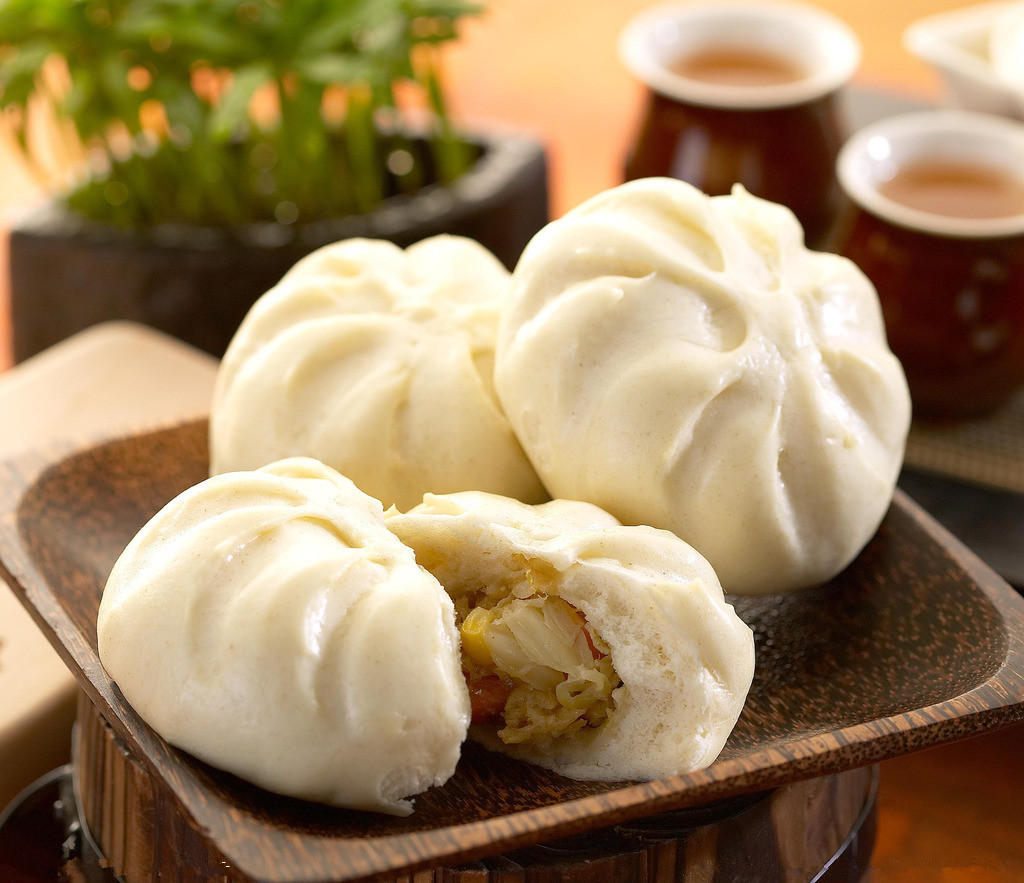
History of Steamed Buns
Chinese steam bun was invented by the scholar and military strategist Zhuge Liang over 1800 years ago during the legendary Three Kingdom Period. But it was called mantou instead of baozi, until Song Dynasty.
At the very beginning, it was shaped in human head, without stuffing. Later, during the Jin Dynasty, steamed buns were still called mantou, but it was filled with meat, which was delicious and often served on sacrificial tables.
In the heyday of Tang Dynasty, various countries sent emissaries to learn the history and culture of Tang Dynasty. Besides the Chinese steamed buns, there was another kind of steamed stuffed bun -- Bilo, which can be steamed or grilled, and was quite similar to today’s xialongbao.
Ever since Song Dynasty, the stuffing of steamed buns vary from each type, and not just pork always.
Today, steamed buns can be seen all over China, and usually purchased for take-away. They are placed neatly in the steamer or bamboo utensils and giving up sweet fragrance of food while engulfed in steam. Many consider steamed bun a masterpiece of Chinese gourmet art, while almost all people find it an excellent breakfast.
Top 10 Famous Steamed Bun Types in China
There are many different types of steamed buns. The most popular ones are:
Go Believe/Goubuli steamed bun from Tianjin
Founded in 1858 (Xianfeng Reign of Qing Dynasty), Goubuli steamed bun has a history of more than 100 years. It is the first of the "three wonders of Tianjin" and one of the time-honored brands in China.
The Goubuli steamed buns are fresh and not greasy, tender, with a delicate fragrance. It is mainly made of fresh pork meat. But there are also three fresh steamed bun, seafood steamed bun, soy meat steamed bun, vegetarian steamed bun and other 6 categories, 98 varieties.
Baked Steamed Buns from Xinjiang
Baked steamed buns are among the favorite foods of various ethnic groups in Xinjiang and along the ancient Silk Road journey. It use fresh mutton, preferably the leg of lamb with even fat and lean, to make steamed buns.
The additional ingredients include sheep tail oil, onion, cumin powder (a local speciality spice in Xinjiang, with a special fragrance, is the best seasoning when making mutton dishes), salt, pepper, and water.
Baked buns are mainly baked in the nang pit.
Nanxiang Xiaolongbao from Shanghai
It is famous for its thin skin, tender meat, juicy, delicious taste, and beautiful shape.
The making technique of Nanxiang xiaolongbao was born in the tenth year of Tongzhi in the Qing Dynasty (1871 AD). Since the filling was made with a secret formula, the making technique has been passed down from master to apprentice.
Soup dumpling (guantang baozi) from Kaifeng Henan Province
It is a traditional characteristic snack of Kaifeng city, Henan Province, and belongs to Yu cuisine, and one of the best steamed buns with a combination of skin, soup and filling.
Kaifeng people keep a traditional way to eat soup dumplings, "first open the window, then drink soup, and then you have a full mouth of fragrance".
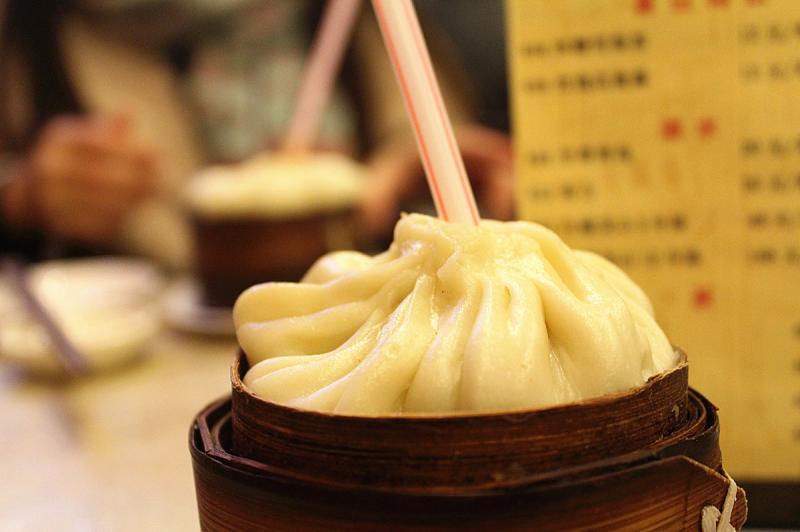
Shengjian mantou from Shanghai
It is a local speciality food in Shanghai, with soft skin, crispy base plate and juicy filling.
To make this Chinese stream bun, first make dough, wrap the filling into shape, put it in a pan, put a little water when frying, and simmer until the bottom becomes golden brown. Later remove the scallion, sesame seeds, and then stew for a while to install the basin.
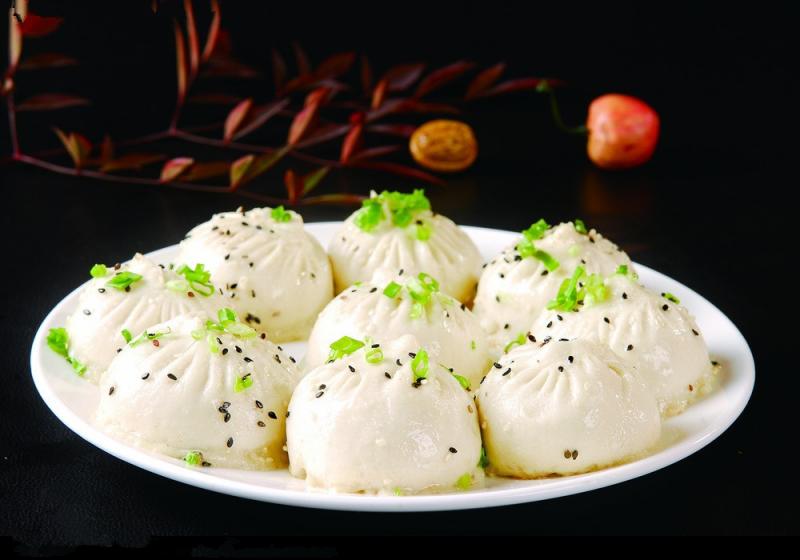
Char siu bao from Guangdong
It is another famous Chinese steam bun and dim sum in Guangdong province and Hong Kong. Char siu for the steamed buns is cut evenly and fat, and in tiny fingernail pieces.
Like Cantonese cuisine, char siu bao tastes salty and sweet, and is usually eaten with torn hands, so the filling should be bright and shiny, but not runny.
Steamed creamy custard bun (naihuang baozi) from Canton
It is a local traditional dim sum of Guangdong province. Cantonese people have the habit of drinking morning tea. When drinking morning tea, they usually have an order of naihuang steamed buns.
The filling is made of milk and salted egg yolk, making this Chinese steam bun very healthy breakfast.
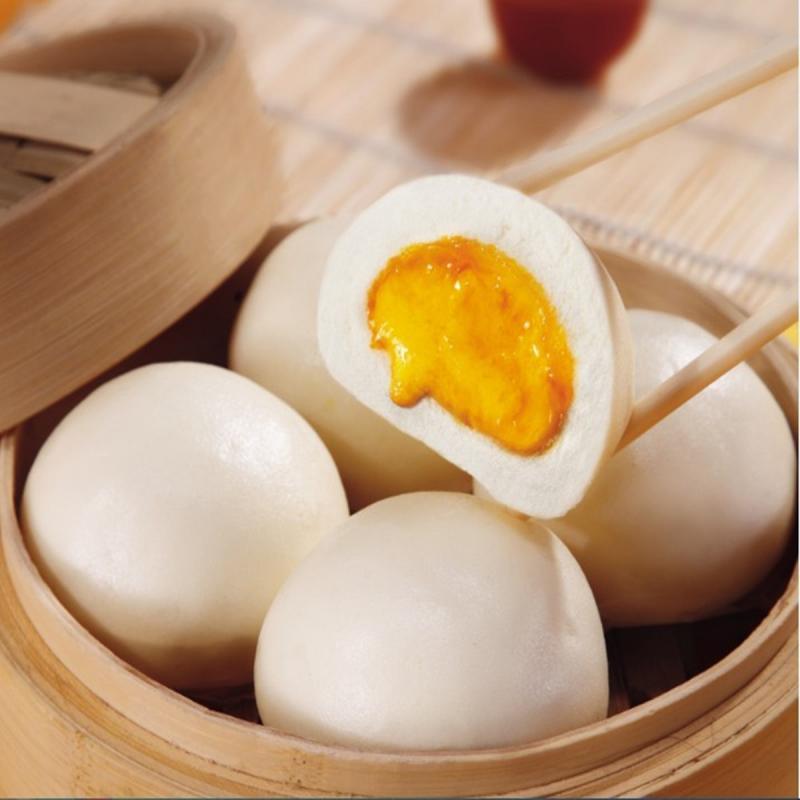
Qingfeng steamed buns from Beijing
Qingfeng baozi shop has a history of 74 years (by 2022). It was originally called "Wan Xing Ju".
Apart from the traditional pork scallion, three pork delicacies, three vegetarian delicacies, Qingfeng steamed buns also have other kinds of stuffing, such as fresh shrimp, pork and dried vegetables, beef scallion, beef carrot and so on.
The shop also provides other traditional Chinese breakfast, including chicken soup wonton, purple rice congee, stick residue congee, mung bean congee, etc, and delicious cold dishes, such as soya sauce pig elbow, soya sauce beef, braised crisp fish, sesame bean curd, scrambled eggs and shredded kelp.
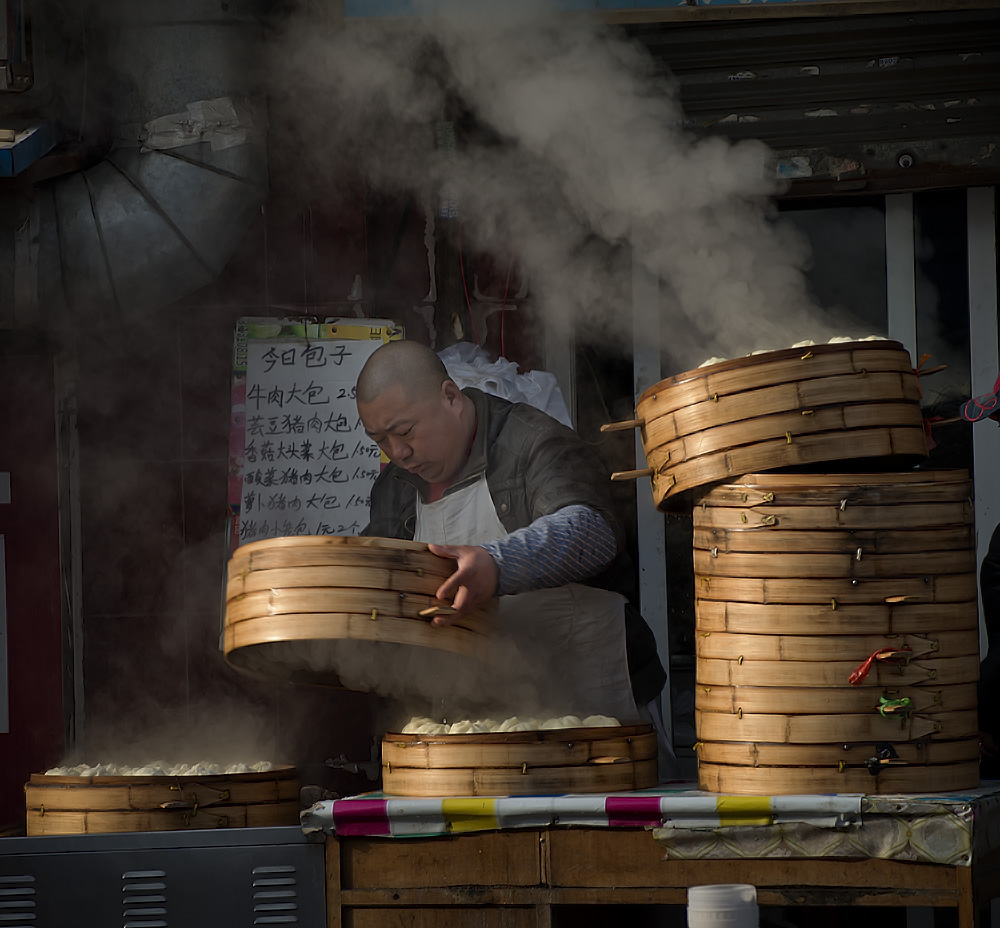
Fried bun (shuijianbao) from Shandong Province
With a history of more than 500 years, this type of steamed bun was originated from the ancient capital Kaifeng and has been especially popular in Shandong.
How to make Shandong fried steamed buns? Wrap the dough with filling, put it into a pan, add water or thin flour paste and fry it with high fire. Pour in small grinding oil when cooked, turn over and fry again.
Doushabao (sweet bean paste baozi)
Dousha bao, also known as dourong bao, is a traditional steamed bun filled with red bean paste that originated in Beijing and Tianjin.
How to Make Steamed Buns - Recipe
What is baozi made of, and how to make it? Chinese steamed bun is a fermented food that can be filled with pork, beef, lamb meat, yolk, hot dog, chicken, candy, bean paste or various vegetables, and may be made in small cage package, or in big size and served individually. There are both meat steamed buns and vegan steamed buns.
If you want to make meat steamed buns yourself at home for breakfast, here’s the recipe, with the step by step guide (simply replace the meat with vegetables if you prefer vegetarian steam bun):
Ingredients: 300 grams of flour, 180 grams of water, 1 gram of salt, 3 grams of yeast, 400 grams of pork, 50 grams of incense shaves, 1 teaspoon of salt, 1 tablespoon of light soy sauce, 1 tablespoon of oyster sauce, sugar, cooking wine.
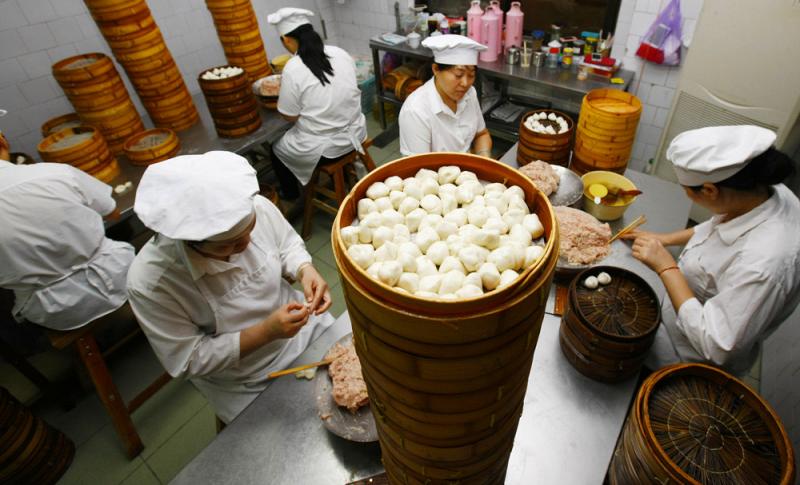
1.Mix flour, salt and yeast and add water to form flocs.
2.Knead into a smooth dough.
3.Let ferment in a warm place.
4.Make the filling while fermenting, wash and mince the pork after buying it.
5.Wash and cut mushrooms into small pieces.
6.Mix the chopped meat with the shiitake mushrooms.
7.Add a little water and whisk in one direction and gradually add the water until it becomes sticky.
8.Exhaust the fermented dough and divide it into 40g pellets.
9.Roll out the small pellets into a round sheet.
10.Take one side of the piece and put in some meat.
11.Tuck them into a couple of tucks and tuck them in.
12.Put it all in the steamer.
13.Add cold water to the pot, steam for 15 minutes after boiling, and another 3 minutes with low heat, then serve for breakfast!
How to Steam Buns without a Steamer?
In fact, you don’t really need a steamer to steam buns. Ordinary cooking pot can also steam buns. Prepare three pairs of chopsticks, put them horizontally into the pot. You also need add water. the depth of water should not exceed the chopsticks. Put gauze on the plate, and then put the steamed buns, you can steam buns now.
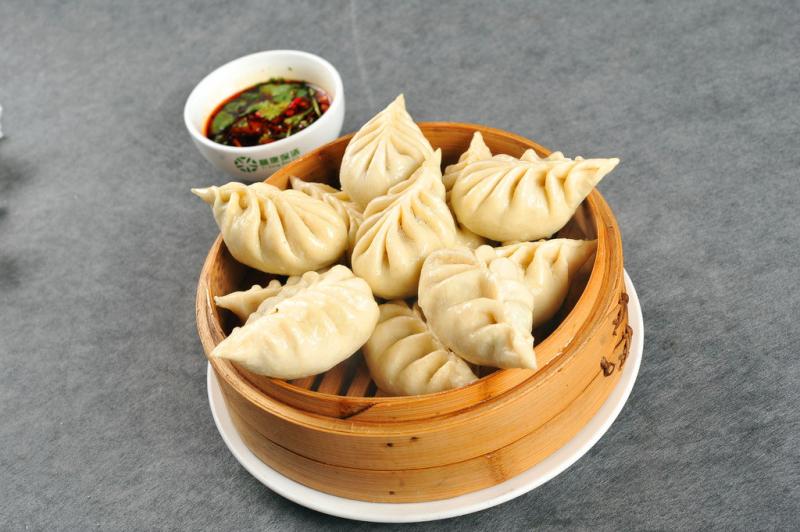
How to Reheat Steam buns
To reheat the steamed buns, you should first soak them in cold water to make the surface moist, and then put into the container covered with a lid. Finally put the container into the microwave oven, and heat for a minute.
If you don't have a microwave, place the steam buns in a bowl, cover them with plastic wrap and steam them in a steamer for a few minutes.